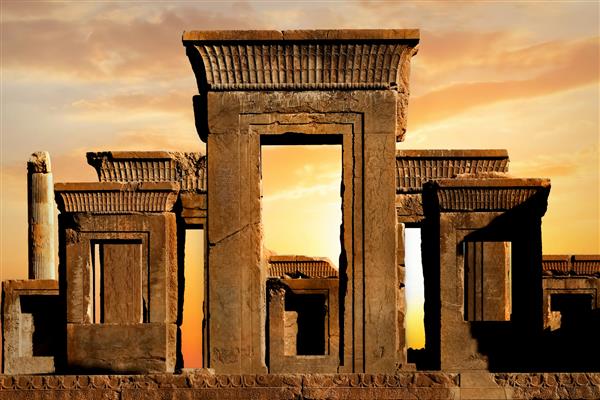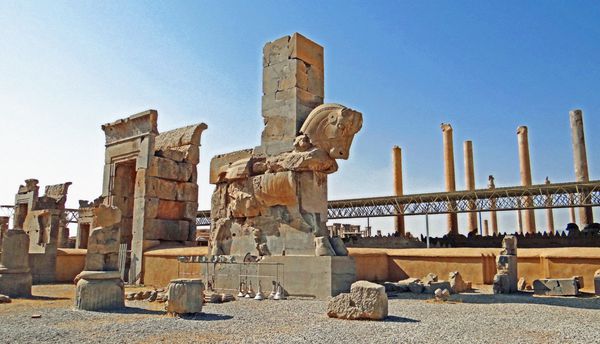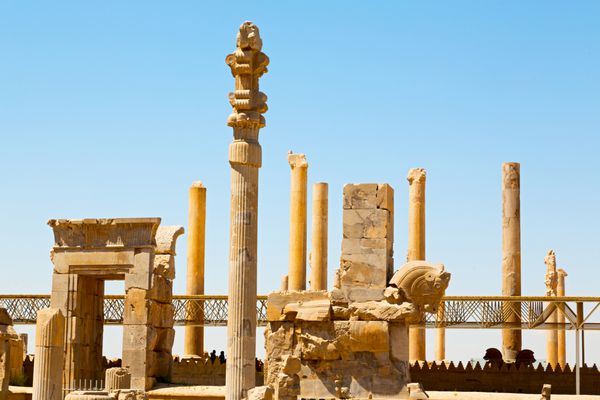Persepolis: The Glorious Heart of Ancient Persia
Persepolis, also known as Takht-e Jamshid, is an archaeological marvel nestled in the rugged landscape of Iran's Fars Province. This awe-inspiring site stands as a testament to the grandeur of the Achaemenid Empire, which once ruled over vast territories in the ancient world. Persepolis, with its majestic palaces, grand gateways, and intricate carvings, offers a mesmerizing journey through time and history.
Historical Significance:
Achaemenid Empire: Persepolis served as the ceremonial capital of the Achaemenid Empire, a colossal empire established by Cyrus the Great in the 6th century BC. It was a testament to the might and sophistication of this ancient civilization.

Architectural Marvels:
Apadana Palace: The Apadana Palace is perhaps the most iconic structure at Persepolis. It is characterized by its grand staircase and a stunning hall supported by rows of colossal columns. This palace hosted grand receptions and ceremonies attended by dignitaries from across the empire.
Tachara Palace: Tachara, an exclusive palace of the king, boasts intricate carvings and served as a royal residence.
Hundred-Column Hall: As the name suggests, this hall is adorned with a forest of columns and was likely used for important official functions.
Gate of All Nations: The Gate of All Nations, adorned with intricate carvings and sculptures, symbolized the empire's inclusivity. It served as the entrance to the city and a venue for receiving foreign delegations.
Cultural and Symbolic Significance:
Persepolis symbolizes several cultural and historical elements:
Achaemenid Achievement: It showcases the architectural and artistic prowess of the Achaemenids, who blended influences from different cultures into a unique and harmonious style.
Multicultural Hub: The Gate of All Nations and the depictions of tribute-bearing delegations highlight the Achaemenid Empire's multicultural character.

Visitor Experience:
Historical Exploration: Visitors can wander among the ruins of Persepolis, exploring the remains of palaces, gateways, and halls that once witnessed the splendor of the Achaemenid rulers.
Archaeological Insights: The inscriptions and reliefs found throughout Persepolis provide valuable historical insights into the empire's governance, society, and culture.
Cultural Enrichment: Beyond its historical significance, Persepolis offers a cultural treasure trove, allowing visitors to appreciate the architectural achievements and artistic finesse of ancient Persia.
Scenic Beauty: Persepolis is set against the stunning backdrop of the Zagros Mountains, adding to its allure and providing a picturesque setting for exploration.
Legacy and Destruction:
Alexander's Conquest: In 330 BC, Alexander the Great captured and partially destroyed Persepolis, resulting in the loss of many precious structures and artifacts. The reasons for this act of destruction remain a subject of historical debate.
Persepolis stands as an enduring testament to the power, sophistication, and cultural richness of the Achaemenid Empire. It invites visitors to step back in time, marvel at the architectural wonders, and reflect on the historical legacy of ancient Persia. As a UNESCO World Heritage Site, Persepolis ensures that the stories of the past continue to captivate and educate generations, preserving the grandeur of this remarkable civilization for the future.


